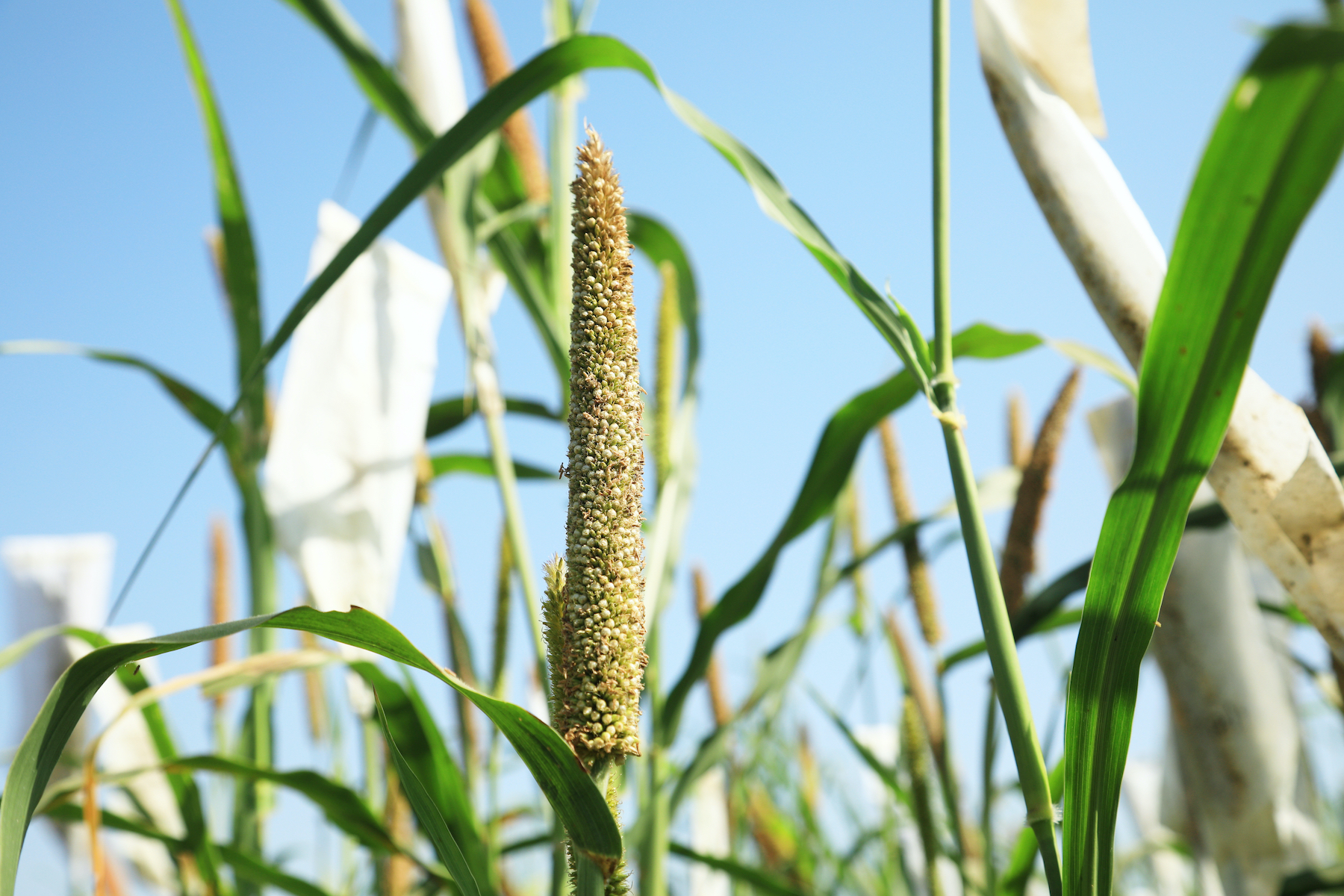Pearl millet
Cenchrus americanus
Crop Overview
Pearl millet (Cenchrus americanus (L.) Morrone) is the fifth most important cereal crop in the world after rice, wheat, maize and sorghum. It is a staple cereal in the Sahel, Sudan, northern Namibia and Angola, and in the state of Rajasthan in India. Millions of the poorest farmers in the world depend on this crop. Pearl millet is commonly referred to as bajra in India, bajri in Rajasthan, mawele in East Africa and mil in other parts of Africa.
Pearl millet originated in the northern–central Sahel of West Africa, where it has been cultivated for at least 4,000 years. Today, it is distributed widely across semi-arid and arid regions, particularly in Africa and South Asia, with significant production in India, Pakistan, Mali, Niger, Nigeria and Senegal. Pearl millet's ability to thrive in poor soils and its drought resistance make it a vital staple for food security in areas vulnerable to climate variability.
Characteristics, Cultivation and Agricultural Practices
Pearl millet is highly drought- and heat-tolerant and is widely grown in arid and semi-arid regions of Africa and Southern Asia. It can be grown in areas receiving too little rainfall for the cultivation of maize and sorghum (200 to 600 mm). In the United States, it is grown under intensive cultivation as a forage crop. Pearl millet prefers sandy or loamy soils and can adapt to low fertility.
Grain yields of up to five tonnes per hectare have been achieved under optimal conditions, but yields in farmers’ fields are commonly between 500 kg and one tonne per hectare. It is commonly grown in traditional farming systems, with minimal use of chemical fertilizers and pesticides. The crop is often intercropped with legumes or other crops.
Nutritional, Economic and Medicinal Value
Pearl millet has high concentrations of antioxidants, key amino acids, iron, magnesium, phosphorus, zinc and provitamin A. It is also an excellent source of carbohydrates and dietary fiber. Additionally, pearl millet has a low glycemic index, making it suitable for individuals with diabetes.
In many regions, pearl millet plays a crucial role in local diets, where it is consumed in various forms, including porridge, flatbreads and fermented beverages. Malted pearl millet has also been used in combination with legumes in weaning foods.
Beyond its nutritional uses, pearl millet has potential applications in the biofuel industry due to its high biomass yield. High starch content also allows the production of biodegradable plastics and other industrial applications.
Cultural Importance
Pearl millet holds significant cultural importance in many societies, particularly in Africa and India. It is used in rituals, festivals and rites of passage in many cultures, symbolizing sustenance and resilience. Pearl millet is prepared during harvest festivals and family celebrations, underscoring its role in cultural identity and community cohesion.
Gender Perspectives
In general, women are the primary producers of pearl millet. For example, up to 80% of millet growers in India are women, although men take a lead role in the crop in West Africa. Women are commonly involved in all stages of production and use of pearl millet, from land preparation to harvest and processing of the grain. However, women face challenges such as limited access to resources, training and markets, which can limit their productivity and income.
Why is the Crop Underutilized?
Despite its resilience and nutritional benefits, pearl millet is underutilized. Factors contributing to this include lack of research and development on the crop, resulting in low yields and inadequate processing and marketing infrastructure, and limited consumer awareness of its health benefits. The crop is also susceptible to parasitic weeds such as Striga hermonthica, bird damage, downy mildew and pests such as head miner caterpillars, which can cause losses of up to 85% of the grain.
Diversity Available in Genesys
As of December 2024, Genesys, the online platform providing information about plant genetic resources for food and agriculture conserved in genebanks worldwide, lists nearly 40,000 seed samples of pearl millet, with more than three-quarters identified as landraces. The largest collections are held by:
- International Crops Research Institute for the Semi-Arid Tropics (ICRISAT): 29,492 samples.
- Agricultural Plant Genetic Resources Conservation and Research Centre, Sudan: 3,220 samples.
- SADC Plant Genetic Resources Centre, Zambia: 1,789 samples.
Current Breeding Efforts
Breeding efforts for pearl millet are focused on enhancing yield potential, pest resistance and drought tolerance. Major breeding programs include those run by ICRISAT, the All India Coordinated Research Project on Pearl Millet, and Kansas State University in the USA. Breeding objectives include high grain and forage yields, resistance to diseases, insect pests and Striga, and tolerance to drought, high temperatures and acid soils.




